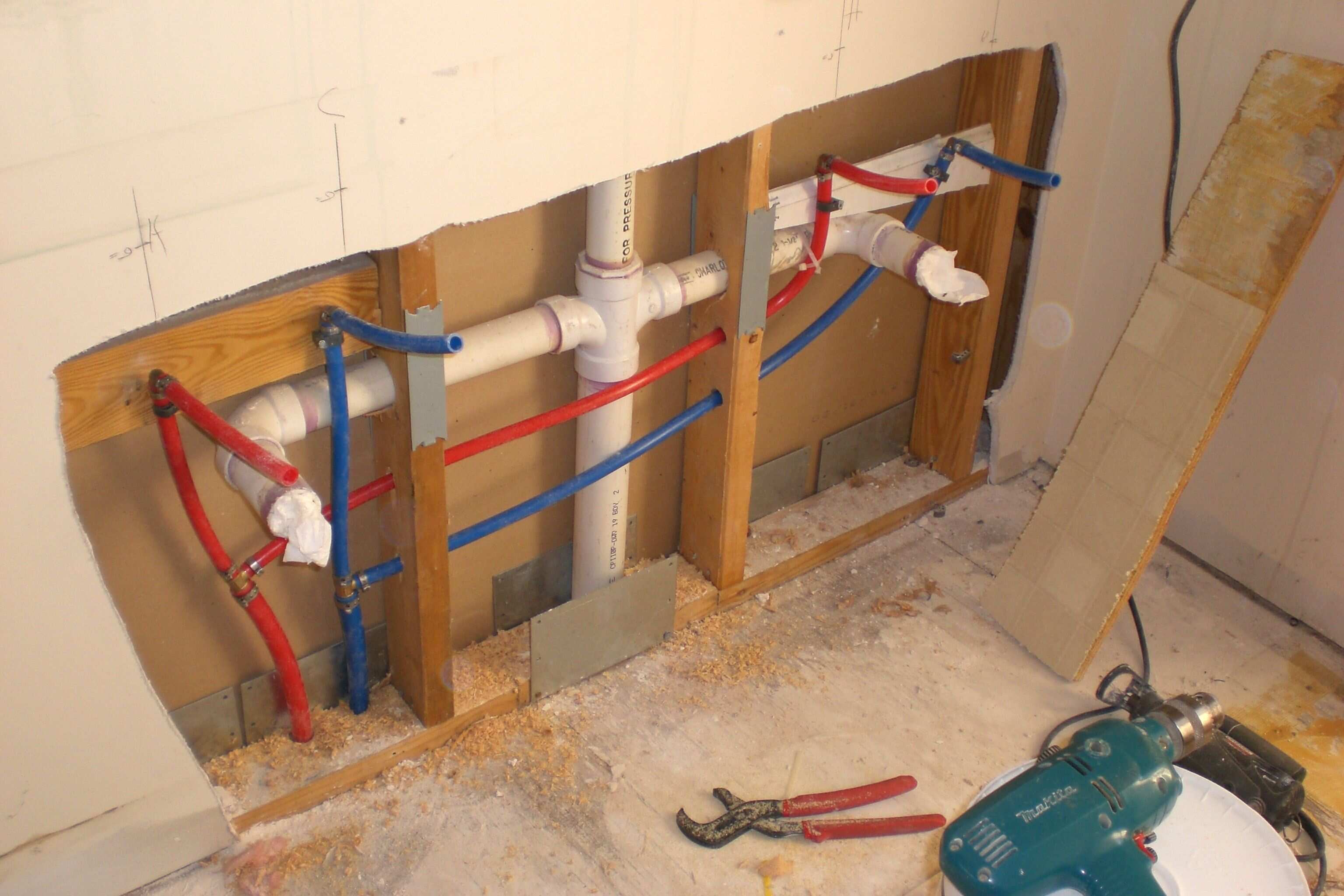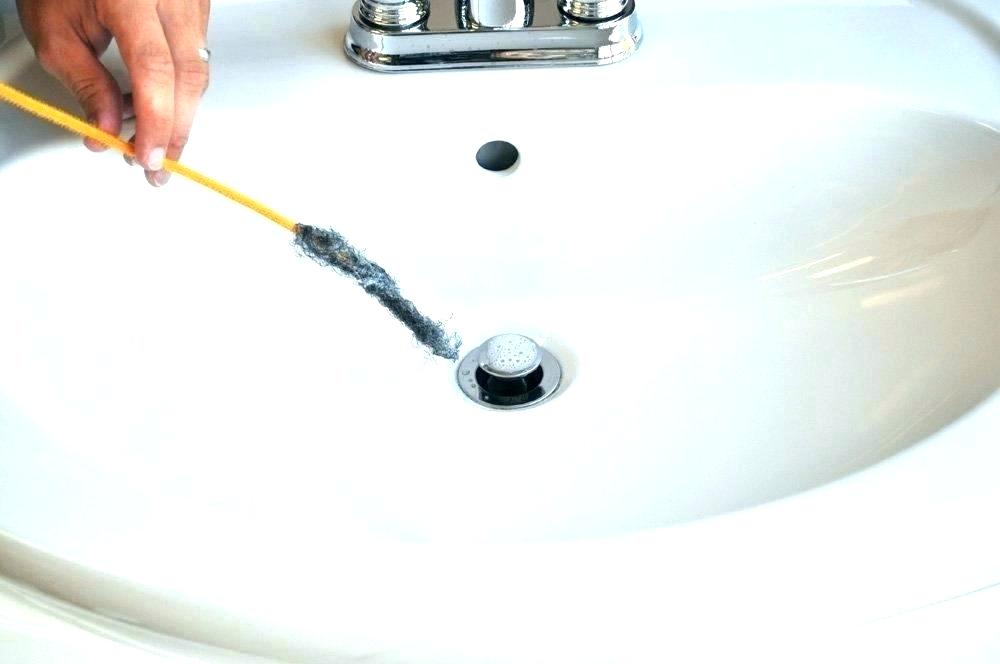If you've noticed standing water in your bathroom sink pipe, you're not alone. This common plumbing issue can be frustrating and inconvenient, but it's important to address it as soon as possible to prevent further damage. In this article, we'll discuss the top 10 causes of standing water in bathroom sink pipes and how to fix the problem.Standing Water in Bathroom Sink Pipe: What You Need to Know
The first step in fixing standing water in your bathroom sink pipe is to determine the cause. This will help you find the most effective solution. Below are some possible causes and solutions:How to Fix Standing Water in Bathroom Sink Pipe
1. Clogged Drain: One of the most common causes of standing water in bathroom sink pipes is a clogged drain. This can be caused by a buildup of hair, soap scum, or other debris. To fix this, you can try using a plunger or a drain snake to remove the clog. 2. Blocked Vent: Another common cause of standing water is a blocked vent. The vent is responsible for allowing air to enter the drain and keep it flowing smoothly. If the vent is blocked, it can cause water to back up in the sink. You may need to call a professional plumber to clear the vent. 3. Broken Pipe: If you notice standing water in your bathroom sink pipe, it could be due to a broken or damaged pipe. This can be caused by aging pipes, tree root intrusion, or other factors. A professional plumber can help identify and fix the issue. 4. Improper Installation: If your bathroom sink was not installed properly, it could be causing standing water. This could be due to a poorly connected drain or vent, or an incorrect slope in the pipes. It's best to have a professional plumber inspect and correct the installation. 5. Mineral Buildup: Over time, minerals from hard water can build up in your pipes and cause blockages. This can be prevented by regularly cleaning your pipes with a mixture of vinegar and water. 6. Faulty Faucet: A faulty faucet can also cause standing water in your bathroom sink pipe. This could be due to a worn-out washer or other internal component. If you notice a leak or dripping faucet, it's best to have it repaired or replaced by a professional. 7. Sewer Line Issues: If you have standing water in multiple drains in your home, it could be a sign of a bigger issue with your sewer line. This could be caused by a blockage or damage to the line. It's important to call a professional plumber to address this issue. 8. Frozen Pipes: In colder climates, standing water in bathroom sink pipes can be caused by frozen pipes. This can be prevented by properly insulating your pipes and keeping your home at a consistent temperature. 9. Grease Buildup: Pouring grease or oil down your sink can cause a buildup in your pipes, leading to standing water. It's important to properly dispose of grease and oil by pouring them into a sealable container and throwing them in the trash. 10. Old Pipes: If you have older pipes in your home, they can become corroded or damaged over time, leading to standing water. It's best to have a professional plumber inspect your pipes and replace them if necessary.Causes of Standing Water in Bathroom Sink Pipe
Now that you know the possible causes of standing water in your bathroom sink pipe, let's discuss how to clear it. 1. Plunger: As mentioned earlier, a plunger can be used to clear a clogged drain. Place the plunger over the drain and plunge up and down several times to create suction and dislodge the clog. 2. Drain Snake: A drain snake is a long, flexible tool that can reach deep into your pipes to remove a clog. It can be purchased at most hardware stores and is easy to use. 3. Hot Water and Vinegar: If you suspect a mineral buildup, you can pour a mixture of hot water and vinegar down the drain to dissolve the minerals. 4. Baking Soda and Vinegar: Another DIY solution is to pour a mixture of baking soda and vinegar down the drain. The chemical reaction can help to break up and clear any clogs. 5. Chemical Drain Cleaner: If all else fails, you can try using a commercial drain cleaner. However, be cautious as these can be harmful to your pipes and should be used as a last resort.Clearing Standing Water in Bathroom Sink Pipe
If you've tried the above methods and are still experiencing standing water in your bathroom sink pipe, it's best to call a professional plumber. They will have the expertise and tools to properly diagnose and fix the issue.Standing Water in Bathroom Sink Pipe Solutions
To prevent standing water in your bathroom sink pipe, there are a few simple steps you can take: 1. Avoid pouring grease or oil down the drain. 2. Use a hair catcher in your sink to prevent hair from going down the drain. 3. Clean your pipes regularly with a mixture of vinegar and water. 4. Have your plumbing inspected and maintained regularly by a professional. 5. Be mindful of what you flush down the toilet as this can also cause issues with your pipes.Preventing Standing Water in Bathroom Sink Pipe
If you're experiencing standing water in your bathroom sink pipe, it can be frustrating and overwhelming. However, by following the above steps and troubleshooting tips, you can effectively address the issue and prevent it from happening in the future.Standing Water in Bathroom Sink Pipe Troubleshooting
While there are a few DIY solutions for clearing standing water in your bathroom sink pipe, it's best to call a professional plumber for a long-term fix. Attempting to fix plumbing issues yourself can lead to further damage and costly repairs.DIY Standing Water in Bathroom Sink Pipe
If you're unable to clear the standing water in your bathroom sink pipe on your own, it's best to call a professional plumber. They have the knowledge, experience, and tools to properly diagnose and fix the issue.Professional Help for Standing Water in Bathroom Sink Pipe
To prevent standing water in your bathroom sink pipe, it's important to schedule regular maintenance with a professional plumber. They can inspect your pipes and address any potential issues before they become bigger problems. In conclusion, standing water in bathroom sink pipes can have various causes, but with the right knowledge and actions, it can be effectively addressed and prevented. Remember to always consult a professional for help and maintenance to keep your plumbing in top condition. Standing Water in Bathroom Sink Pipe Maintenance
How to Fix Standing Water in Your Bathroom Sink Pipe

Dealing with standing water in your bathroom sink can be frustrating and unsanitary. Not only does it create a breeding ground for bacteria, but it can also lead to unpleasant odors and potential clogs in your pipes. If you have noticed standing water in your bathroom sink pipe, it is important to address the issue promptly to prevent further damage and maintain a clean and functional bathroom. In this article, we will discuss the causes of standing water in your bathroom sink pipe and provide tips on how to fix it.

If you have noticed standing water in your bathroom sink pipe, the first step is to determine the cause. There are a few common reasons why this may be happening:
- Clogged Drain: The most common cause of standing water in your bathroom sink pipe is a clogged drain. This can happen due to a buildup of hair, soap scum, or other debris. Over time, these blockages can become more severe and prevent water from draining properly.
- Broken Pipe: Another possible cause is a broken or damaged pipe. Over time, pipes can corrode or develop cracks, causing leaks and preventing proper drainage.
- Improper Venting: If your bathroom sink pipe is not properly vented, it can create a vacuum that prevents water from draining properly. This can cause standing water to accumulate in the sink.
Now that you have identified the cause, it's time to take action and fix the issue:

1. Use a Plunger: If the clogged drain is the culprit, using a plunger can often do the trick. Fill the sink with enough water to cover the plunger and create a seal, then plunge vigorously to dislodge the blockage.
2. Use a Drain Snake: If the plunger doesn't work, try using a drain snake to remove the clog. Insert the snake into the drain and twist it to grab onto the blockage and pull it out.
3. Clean the Drain Pipe: If the above methods do not work, you may need to clean the drain pipe manually. Remove the drain stopper and use a wire or drain brush to remove any stubborn debris.
4. Inspect for Damage: If you suspect a broken or damaged pipe, it is best to seek professional help. A plumber can inspect the pipes and make any necessary repairs.
5. Check for Proper Venting: If you suspect improper venting, it is best to consult a professional to ensure that your bathroom sink pipe is properly vented to prevent future issues.
In conclusion, standing water in your bathroom sink pipe can be a nuisance, but it is a common problem that can be easily fixed. By identifying the cause and taking appropriate action, you can ensure a clean and functional bathroom. If you are unsure or uncomfortable with performing any of the above steps, it is always best to consult a professional plumber for assistance.
































/close-up-of-overflowing-bathroom-sink-90201417-579787783df78ceb865822d8.jpg)

:max_bytes(150000):strip_icc()/sink-pipe-under-wash-basin-119001607-6f28aec4c66944efb7a9a38cb622ab8b.jpg)


:max_bytes(150000):strip_icc()/what-is-under-the-bathroom-sink-3973574-03-c2c800c743054899aca9bdcc0535db34.jpg)



















